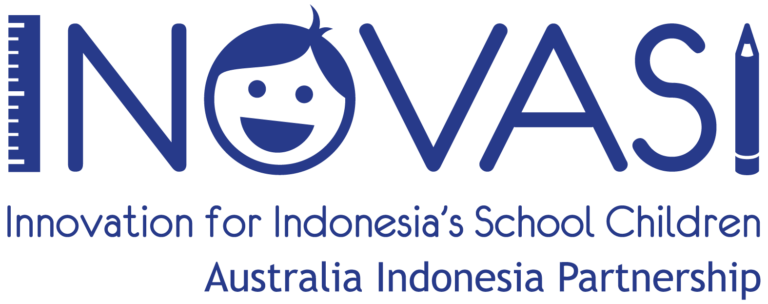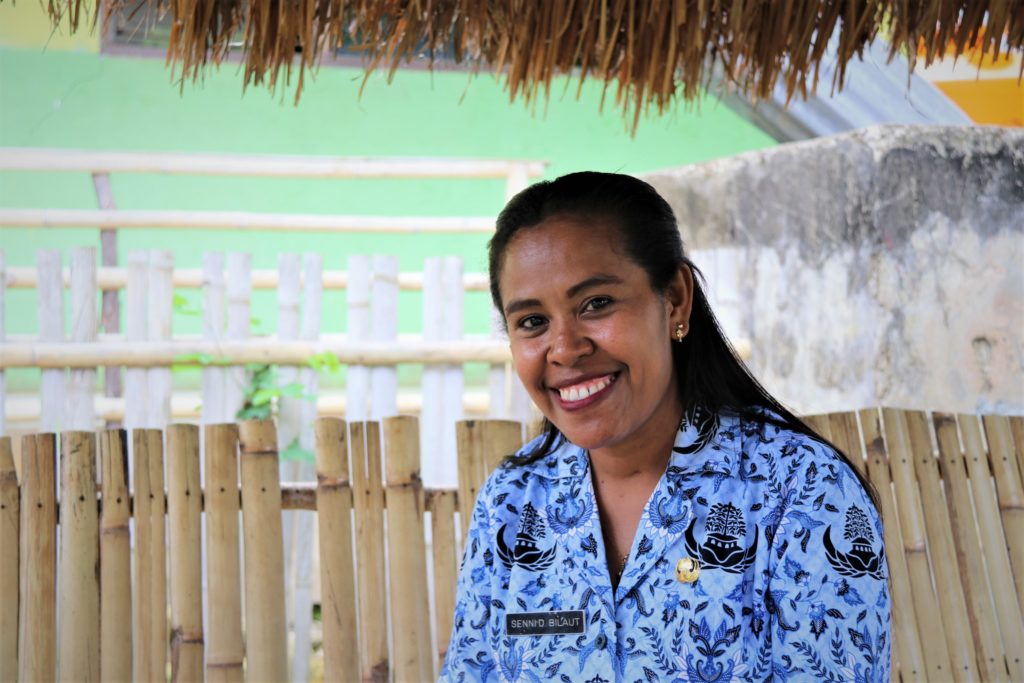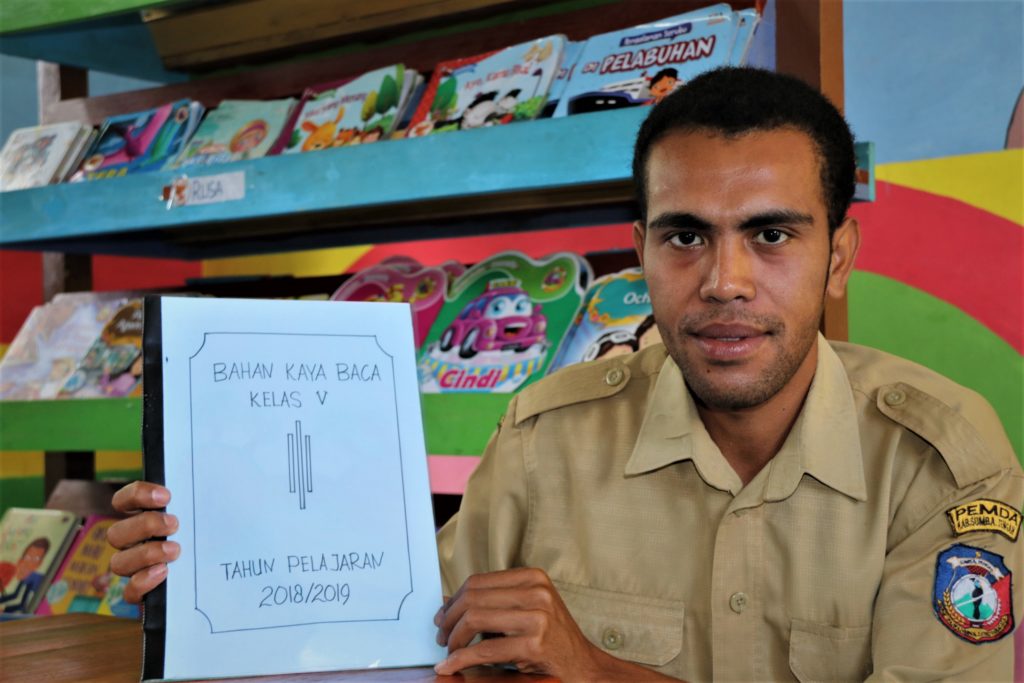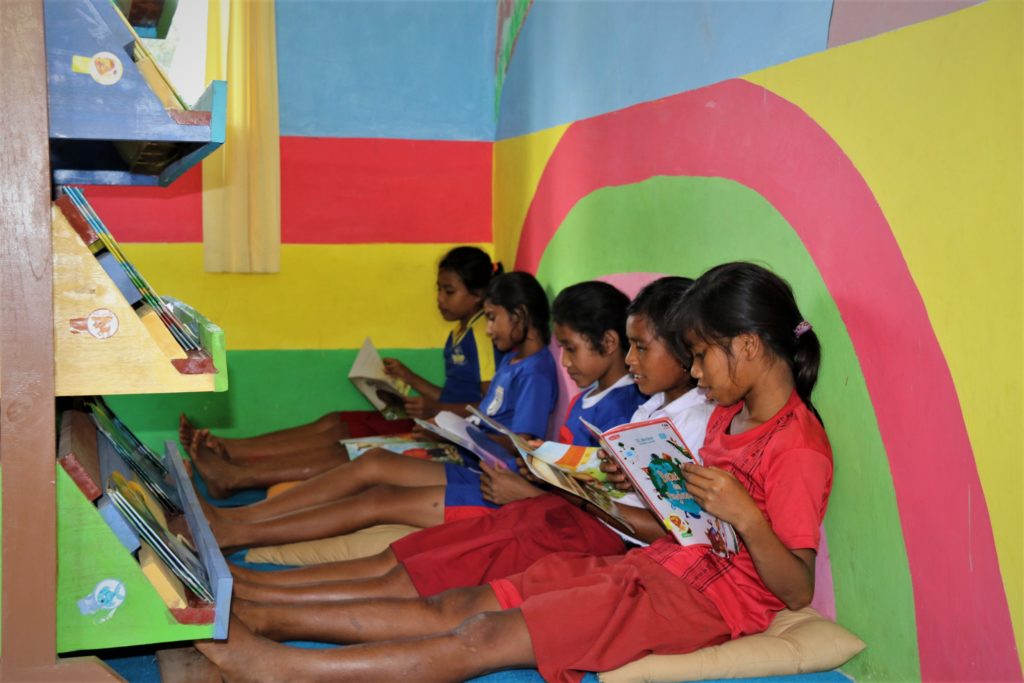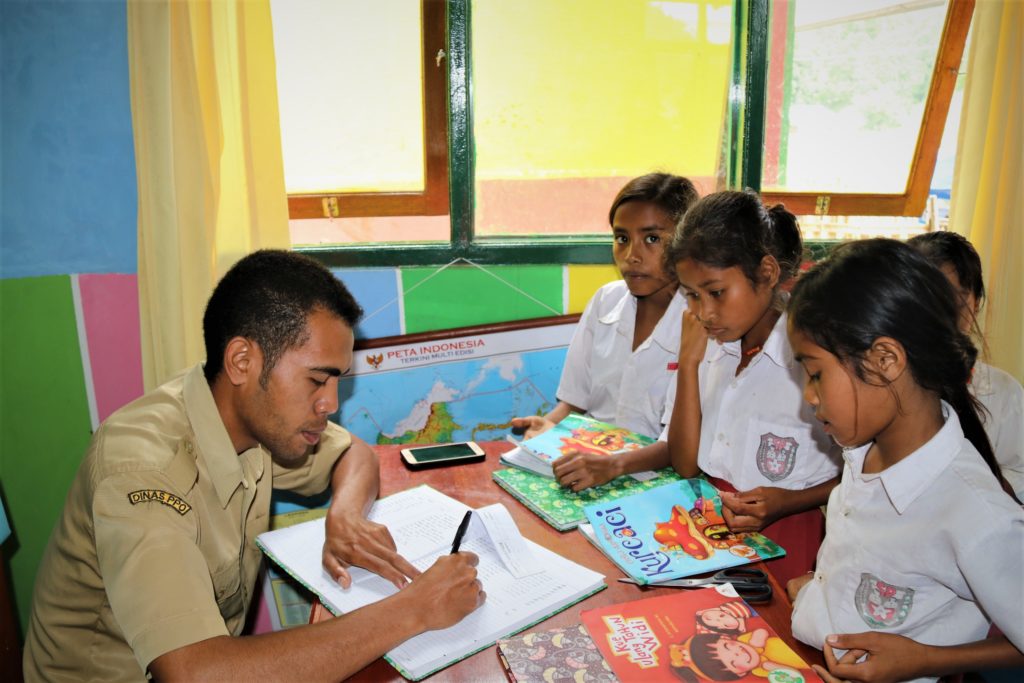
Knowing that parents felt limited in their ability to become more involved in their child’s interest in learning, and with the help of the teachers, Senni attempted to encourage the students to use the library to foster their interest in reading. However, her plan didn’t work. The reason it didn’t work is that the existing book collections at the library are mostly textbooks, and the remaining books are not suitable for elementary school students, for example, books on how to breed catfish.
Semuel Olla, a librarian who has served at SD Inpres Binawatu since 2014, echoed the problem: “There are some children who come [to the library], but most of them take a book, look at it for a moment, and then return it to the cupboard,” said Semuel.
In his opinion, the setting of the library room also contributes to the low interest of students in the library. “The walls are plain white, and there are no pictures or paintings on them. There are no bookshelves. Students sometimes don’t return books to the cupboard, so the books are scattered on the floor,” continued Semuel.
Even though he has an educational background in the field of librarianship, Semuel admits that his daily routines are limited to duties such as cataloging and tidying books, and receiving visits from students. The school implements a 15-minute literacy program that is conducted before the Learning Activity (Kegiatan Belajar Mengajar, or KBM) takes place, and students can visit the library and read anywhere without the teacher’s assistance. However, this did not bring significant changes to students’ interest in reading.
After receiving assistance from the Child-Friendly Library program, SD Inpres Binawatu was able to use a different library space for textbooks and story books. The story books are placed in a library developed in collaboration with TBP (Taman Baca Pelangi). After the renovation, TBP donated around 1,500 copies of books with various titles and levels.
Librarians, teachers, school principals, and even the school security participated in training for library management, including book registers, book leveling, room arrangement, and how to carry out reading activities—reading aloud, reading together, reading independently, and reading in pairs.
The library is now quite attractive. Library management has also been improved so that students frequent the library more often outside of the set mandatory visiting hours, and now the students feel at home when they’re reading in the library. Many students even use their breaktime to read in the library. According to Semuel, children now read books they’ve borrowed from the library at home.
“Now, the children read more often. This is because there are books they can borrow from the library,” said Semuel, repeating what a parent told him
More improvement is still needed
Even though the children have shown a high interest in reading, the mentoring provided by the teachers is not yet optimal. According to Semuel, this is because there are still teachers who are absent from their duties, which is to assist their students during the mandatory visiting hours. Senni noted that, “teachers are mentoring according to what they learned during training; however, their participation level is still lacking. Sometimes they don’t come [during the mandatory visiting hours],” said Senni.
To ensure that this does not continue, as the school principal, Senni has taken some measures. In addition to requesting written reports from teachers and librarians, she also goes to the library during the scheduled visiting hours to see whether teachers are providing assistance or not. When she is not at school, Senni asks the vice principal to visit the library for her.
Senni said that she hasn’t hesitated to reduce a teacher’s performance score if it is proven that they have not assisted the students with their reading. Senni noted, “I want to build their sense of ownership and responsibility towards improving students’ reading skills.”
Meanwhile, in order to keep the library child-friendly, Senni has decided to allocate BOS (Bantuan Operasional Sekolah, or School Operational Funds) to refresh the appearance of the library and the books being displayed on the shelves. This upkeep will be done once every three months. BOS funds will also be used to finance mini KKG (Kelompok Kerja Guru, or Teacher Working Group) to continue to improve the skills of teachers and librarians while reflecting on past activities.
When it comes to mentoring, Senni emphasized the use of effective communication when teachers and librarians interact with the students.
“If students don’t understand how to borrow a book or how to take care of the books, don’t yell at them! Just teach them how to do these things,” said Senni.
